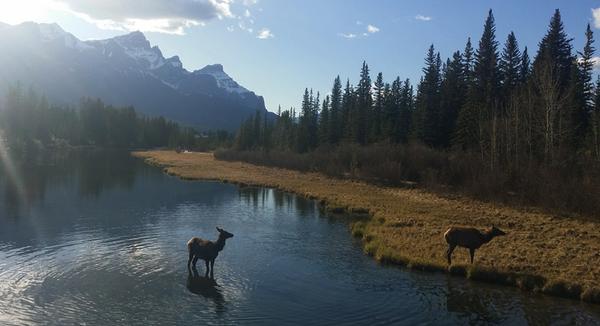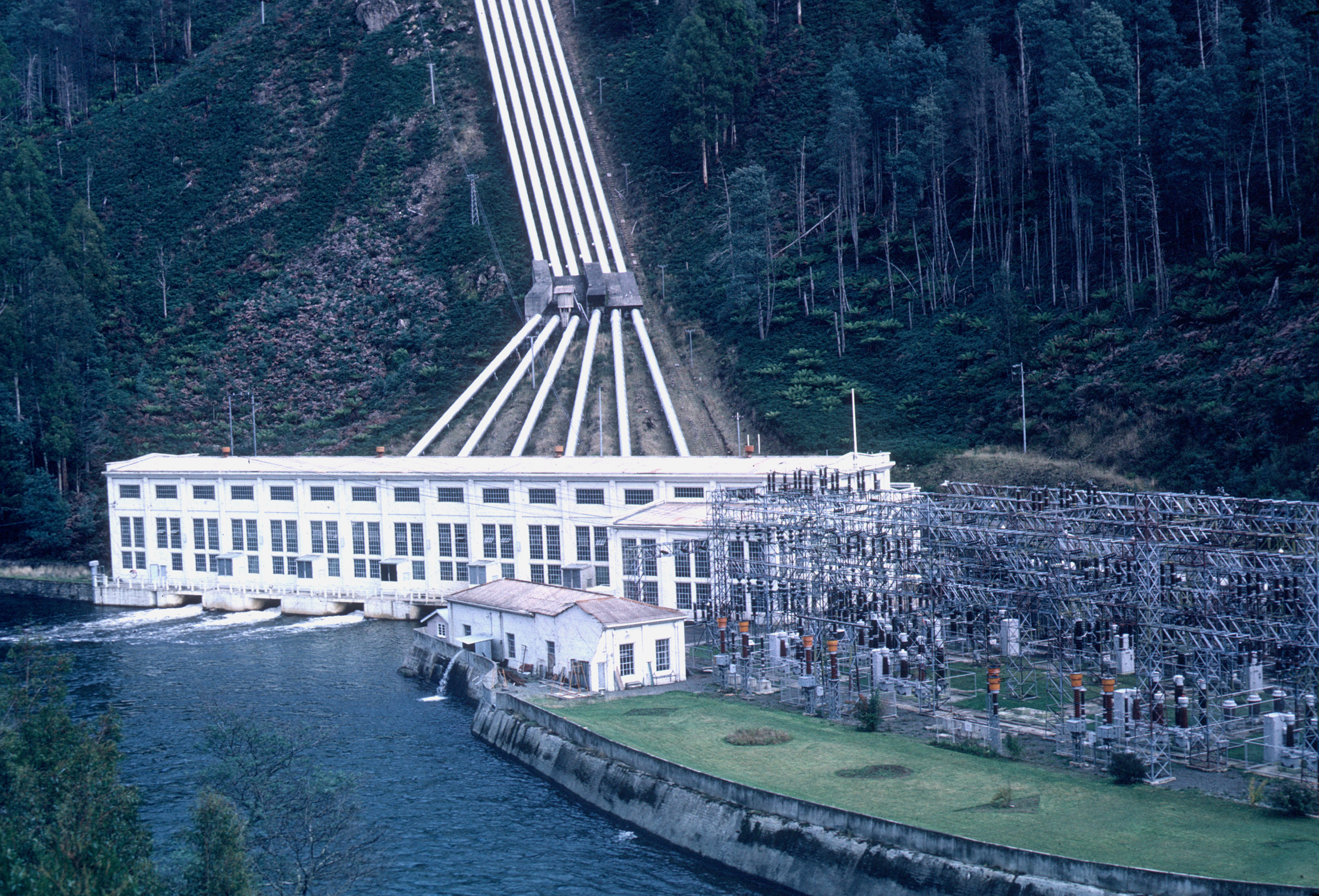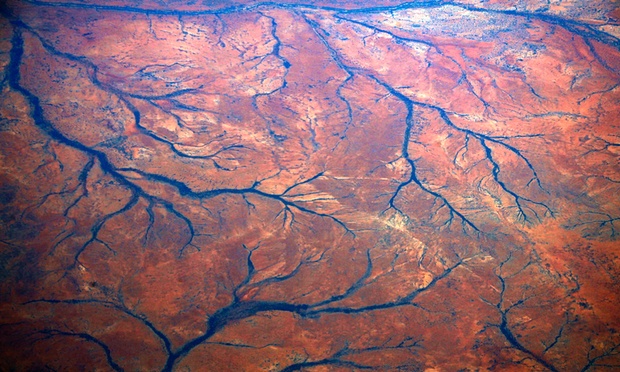The Renaissance of Hydrology

Hydrology has evolved as a transdisciplinary, data-driven science in a remarkably short period of time.
Over the past 50 years, hydrology has experienced a revolution in theory, technical application, and interdisciplinary collaboration.
Space-based topographic data, real-time weather telemetry, and advances in computer technology have created a new, data-rich environment. This new environment has drastically changed how hydrology research is conducted and applied.
But as impressive as these technological advancements are, the hydrological revolution owes as much to a shift in culture.
The breadth and scope of hydrology have evolved. It’s no longer just a matter of the discharge of individual river basins or a top-down “central planner” approach to water resources. It’s not enough to consider water quantity and quality without considering contributing factors and processes.
“There’s been a renaissance in this field, and it happens at the intersections,” says Winston Yu, a senior water resources analyst at the World Bank.
Yu explains that hydrology can now encompass questions of ecology, economics, and politics. The field now recognizes plants and landforms as key factors influencing the movement, quality, and cycling of water. Human activity, too, is no longer considered external to the water cycle. “In each of these subfields, there’s tons of stuff happening,” he said.
The International Hydrological Decade
These changes occurred in parallel and in dialogue with each other. New technology facilitates new ways of thinking. Dissatisfaction with old paradigms and social demand motivate new research and new ways of thinking.
It’s not often that one can point to a specific time and place when both forces met to create something incredible. One of these moments occurred in 1962 in a little bar in Greece.
The International Association of Hydrological Sciences (IAHS) was holding a symposium on arid region groundwater in Athens. At the symposium, Raymond Nace, an American hydrologist with the U.S. Geological Survey (USGS), approached Léon Tison, then secretary-general of IAHS, with an ambitious proposal: a decadelong global hydrology research initiative. Modeled on the success of the 1957–1958 International Geophysical Year, the initiative would include longitudinal studies, global data collection, and the development of new hydrological education initiatives and would also integrate economics and environmental concerns into the standard “water cycle” paradigm.
Tison, busy with the conference and not terribly fluent in English, passed Nace off to a United Nations Educational, Scientific and Cultural Organization (UNESCO) scientific attaché, Michel Batisse. Batisse had been involved with the UNESCO Arid Lands Project and was taken by Nace’s proposal.
“The idea of setting up a realistic international program starting from these wildly ambitious dimensions seemed to me both exciting and possible,” Batisse would later write for UNESCO.
Over ouzo, Batisse gave Nace some insight into how to get his idea in front of the UNESCO governing board. They parted ways shortly after.
“I thought afterwards I had surely frightened him more than encouraged him by this peek into international bureaucracy,” wrote Batisse.
Nace’s proposal would eventually become the basis for the International Hydrological Decade (IHD), a foundational initiative in hydrology that encouraged scientists from all over the world to collaborate on water research. It’s hard to imagine the staggering ambition of such a project in the context of the 1960s.
These days, international science conferences are relatively common. Water issues are frequently front and center. But the IHD was proposed at a time when the international scientific community was split by the Cold War. Eastern and Western Bloc scientists were rarely allowed to collaborate.
The Birth of Modern Hydrology
To contextualize the IHD even further, hydrology as a distinct scientific discipline was still in its infancy. Although water had been a topic of philosophical inquiry for thousands of years and water infrastructure has existed since the dawn of civilization, hydrology was relatively late to develop.
At the time of Nace’s proposal, hydrology had formally existed for about 30 years in the United States. It had been carved out as a distinct discipline in 1931 by Robert Horton, “the father of American hydrology,” when he published the now familiar outline of the water cycle in his paper “The Field, Scope, and Status of the Science of Hydrology.” Horton recognized that “hydrology literature” was distributed across many disciplines, including ecology, agriculture, and engineering. Other pioneering hydrologists would follow suit.
“Instead of splintering, [hydrologists] amalgamated themselves into a new discipline, including elements of geology, biology, and so on,” said retired U.S. Army Corps of Engineers historian Martin Reuss.
This birth of hydrology coincided with a massive boom in water infrastructure development. Water was fast becoming a resource to be measured and managed. “The quantitative view of water…is so new to thought that familiar units are lacking,” wrote geologist William McGee in 1911.
Acts of Congress empowered federal agencies like the Bureau of Reclamation and the Army Corps of Engineers to build irrigation, flood control, hydroelectric, and water navigation projects across the country. Water projects like the Hoover Dam, on the Colorado River border between Nevada and Arizona, became monuments in their own right.
This massive water infrastructure rollout was not without social and environmental costs. Although many of these projects were built in service of “conservation,” the word meant something different then than it does now. Ecological damage was not a consideration.
“True conservation of water is not the prevention of use,” said President Herbert Hoover in a 1929 speech. “Every drop of water that runs to the sea without yielding its full commercial returns to the nation is an economic waste.”
Social costs, such as the mass displacement and dispossession of Native Americans during the building of North Dakota’s Garrison Dam, were ignored by authorities. The cost-benefit analysis of these projects was often inconsistent and flawed. It was difficult to compare projects or prove that they met their objectives.
In addition, although hydrology had technologically advanced in terms of measurement, approaches were still limited and could not account for weather variations over time, basin topography, and soil properties.
Luna Leopold, then chief hydrologist for the USGS, lamented the lack of good, general tools for water management. “We, the engineers and other scientific personnel,” he wrote in 1959, “…are still trying to run a mechanized complex of water development with a tool kit…limited to a screwdriver and a pipe wrench.”
Redefining Hydrology and the Public Good
Ultimately, there was growing awareness of the tension between water infrastructure, water use, and a more expansive understanding of the public good.
In a coauthored piece for the USGS, Leopold and Nace explored the tension between government as developer and government as guardian of the land: “The basic trouble is that traditional concepts of protection and development are naive in relation to the complex nature of land and water problems in a mature society. The approach to these problems has been, and continues to be, a strictly engineering approach.”
In this atmosphere of discontent, political scientists, hydrologists, and economists started to consider other questions: How do you go about doing these projects while not ruining people’s health and communities? How do you evaluate whether a project should be done or if it’s working? What are the long-term costs of these projects?
“It seems to us that a first step toward answering [these questions] would be to reevaluate the criteria for determining what is in the public interest,” wrote Nace and Leopold.
Almost as an answer to these questions, the Harvard Water Program emerged in the late 1950s. Led by political scientist and Army Corps critic Arthur Maass, the program sought to syncretize the fields of hydrology, economics, sociology, engineering, and the new field of computer science into a unified whole.
The program tried to address all the objectives of water planners in a practical way. “The computer model was run such that everything had to be done in the political sphere, to inject common sense in water development,” historian Reuss explains.
It was the prototype for modern, interdisciplinary resources planning and was eventually incorporated into Army Corps practice.
Nace, too, recognized this need. In a 1964 paper outlining his rationale for the International Hydrological Decade, he called hydrology the “laggard science.” He pointed to the overemphasis on large-scale engineering over basic research, the limited scope of hydrology training, and the fractured state of the field. Unification, cohesion, and attention to the discipline were required.
“Wealth and engineering skill are no longer sufficient,” Nace wrote. “New concepts are needed in hydrology and water management.”
An International Effort
But it wasn’t just a matter of unifying practice in the United States.
“Neither water nor science recognizes geographic boundaries,” Nace wrote.
The water cycle was global. Water science needed to follow suit.
One month after bumping into Batisse in Athens, Nace’s proposal was introduced at a formal meeting of UNESCO’s executive board. Nace, it seemed, had not been deterred by international bureaucracy after all.
The measure quickly garnered support in the scientific community, but it took extraordinary effort to organize. Nace, Leopold, and Batisse traveled to Tashkent (now the capital of Uzbekistan) in the USSR to personally secure the cooperation of the Soviet hydrological community. After 2 years of negotiations and with the support of 90 United Nations members—including the Soviet Union—the International Hydrological Decade was launched in 1965.
Over the next 10 years, hundreds of scientists from all over the world worked together to establish a network allowing water to be examined at a global scale.
Participating hydrologists tried to answer basic questions, such as “How much water does humanity have?” and “Where is this water distributed in space and time?”
In addition, the program took into consideration social aspects that had eluded hydrologists in the past, including human migration, water quality issues, and the politics of water. It sought to inform people about flood patterns as well as drought. The watersheds of most member countries were mapped. The effects of urbanization on runoff and erosion were measured and assessed.
Scientists raised the profile of hydrology as a discipline and promoted the creation of hydrology programs at universities. The seminal interdisciplinary journal Water Resources Research was founded by Walter Langbein, a major contributor to the International Hydrological Decade, and published by AGU.
The Long Legacy of the International Hydrological Decade
Modern hydrology’s data-rich environment owes much to the foundational efforts of the IHD.
“I hope this doesn’t sound like an overstatement, but the IHD laid down the basis of hydrology as a science,” wrote András Szöllösi-Nagy, vice chair of the Intergovernmental Council of UNESCO’s International Hydrological Programme, in an email to Eos.
The data, the monitoring stations, and the global mapping of water formed the foundation of later studies that would incorporate satellite data and computer modeling. But just as important, the proliferation of hydrology research programs, scientific associations, study sections, and journals fostered the growth of the field.
“It is undeniable that hydrology plays at the global scale because we have the data,” said Rafael Bras, provost of the Georgia Institute of Technology and a hydrologist himself. He explains that information technology allows us to examine the enormous contextual, spatial, and temporal complexity of water. We can now see these things in almost real time.
“It’s truly revolutionary,” he said.
Today, hydrologists investigate some truly devilish problems, such as how fire, drought, plant communities, and urbanization affect watersheds.
“We’ve gotten better at remote sensing for plant cover, but we haven’t looked at plant adaptation over time,” explained Christina Tague, an associate professor of hydrology at the University of California, Santa Barbara. She went on to explain that plants adapt year to year in response to drought and that those adaptations are highly heterogeneous over time, location, and species. Developing models for these adaptations is a necessary challenge. Without a working understanding of the interplay of hydrology, plants, and fire, it is difficult to mitigate fire or manage water.
“You have to think about it as a system or it doesn’t make sense,” Tague said.
This systemic, interdisciplinary approach has become part of hydrology graduate programs all over the world. Ecologists, political scientists, geologists, and engineers have their hands in training the next generation of hydrologists. Organizations like the Consortium of Universities for the Advancement of Hydrologic Science sponsor cross-disciplinary training programs, bringing graduate students and researchers from diverse programs together.
“When I go to an AGU meeting and see the topics covered by early-career scientists, it is so much broader and more interesting [than when I was training],” says Scott Tyler, a professor of hydrology at the University of Nevada, Reno. “All the big challenges in hydrology are in other disciplines, how water fits in.”
“There’s an elephant in the room, though, the direct change that comes from humans,” says Murugesu Sivapalan, a professor of civil and environmental engineering at the University of Illinois at Urbana-Champaign.
Humans change natural processes so we can satisfy our needs, but nature and changes in culture have ways of turning this back on us in the long term, Sivapalan explained. Building a levee, for instance, can create more flood risk as people feel safe to encroach on rivers or coastlines. Water shortages can be attributed just as often to sociopolitical causes as to the weather.
With the threat of climate change looming, a systematic way of approaching water issues will be even more necessary. Water is essential for food, sanitation, transportation, and health. But it’s also a destructive force and a site of conflict.
When we talk about water, we are never talking about just one thing. Hydrology as a discipline has rapidly evolved to incorporate ideas and data from many different fields. In an era of rapid technological and social change, in a time when the social and environmental stakes are higher than ever, a robust, transdisciplinary approach to water is even more crucial.
Originally published by Eos.org, 28 March 2019.




